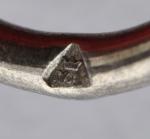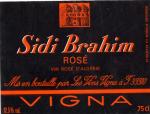-
Posts
402 -
Joined
-
Last visited
-
Days Won
2
Content Type
Profiles
Forums
Blogs
Gallery
Events
Store
Everything posted by Bison
-
Yes I would. To answer more usefully, the Order of Mérite agricole is a special one. It was instituted in 1883 with a single class (and still exists as a 3 classes' Order). The officer's class was instituted on the 18th June 1887 (your ribbon may be one from this period, or just after). The commander's class was established on the 3rd August 1900. Then it became progressively an Order, and was not as such at the beginning. This is a very interesting story to talk about. May be another time. I would appreciate more precise and close shots of the star which would reveal if it is from this early period, or later. Yours Bison
-
These medallions are samples of the numerous given for "préparation militaire" before WWII. "Préparation militaire" does not mean military readiness. It refers to a basic military training delivered to youngsters before their military duty. It was done on a volontary basis, and at different degrees in order to prepare and select them to serve as corporals, sergeants or first lieutenant after an additional training during their mandatory duty in the army, navy or air force. The best recruits used to win these kinds of medallions. The ancesters of the US military coin, in fact. Yours Bison
-
Hello Jaybo This is a huge topic. From a strict point of view, there are only 3 official texts for the Médaille Militaire. - decree of 29 February 1852 : creation, Présidence and IInd Empire. 1st and 2nd types - decree of 8 November 1870 : IIIrd République, 4 different types (from 3 to 6). - decree of 27 February 1951 : IVth, then Vth République, 7th type. There are still discussions about the number of types... The classification below is drawn from an excellent article from Jean Hass in "Symboles et Traditions" nr 93, 1980. Unfortunately, this booklet is no more available now. To be quick : 1st type 1852 : head of "Louis Napoléon", imperial eagle, wings touching the medal. 2nd type 1852 - 1870 : same, wings not touching the medal. 1870 - 1951 : a trophy of arms replaces the imperial eagle, figure of the French republic, mention 1870. 3rd type : biface trophy of arms is welded to the medal. Period circa 1871. ****Note : types 4, 5, 6 are NOT in chronological order and exist simultaneously**** 4th types : biface trophy of arms attached with a ring to the medal. 5th type : sided trophy of arms attached with a ring 6th type : sided trophy of arms attached by a hinge After 1951: mention "1870" is deleted. 7th type : sided trophy of arms attached by a ring or a hinge. There are a lot of variations in the types 4, 5 and 6... Hope this gives a first useful answer. Bison
-
Knowledge is also to be shared... Back to this beautiful so-called "Cent Gardes" piece, I assume it was made by Victor Lemoine, later Ouizille & Lemoine jeweller. His shop was 1, rue du Bac in Paris, that is less than 850 meters from the barracks of the Cent Gardes Squadron which was 37 rue de Bellechasse. Nowadays, this is still the barracks of le Régiment de Cavalerie de la Garde Républicaine. Victor Lemoine was known as the "jeweller of the Légion d'honneur" and used to be the main provider of the Emperor Napoléon III. No doubt he has provided special requirements for special people. His mark used to be on the ring in a diamond with the letters V and L plus a crown and a star of the Légion d'honneur. Regards Bison
-
Thank you Graf for sharing this beautiful Légion d'honneur. I am afraid the denomination "Cent-Gardes" is only a nickname for luxury variations and has no reality. Up to now, nobody has been able to show a document proving that the "Cent-Gardes", that is the body guards Squadron of Napoléon III, were awarded with a special model of the Légion d'honneur. However, we find many of these luxury models during the reign of Napoléon III. This reflects the starting point of a new fashion which has lasted up too now consisting for some jewellers to provide high luxury models instead of a basic one. In my opinion, this term "Légion d'honneur des Cent-Gardes" was invented for sale purposes and became a nickname for this kind of highly desirable crosses. Therefore there are no "true features" for this kind of luxury variations, but only more ore less sophisticated products with no real links with the famous "Escadron des Cent-Gardes". For sure yours is one of the most beautiful! Anyway, these kinds of models are fantastic and remain a must for a Légion d'honneur collector. Did you find any maker's marks on it? Regards Bison
-
Hi TacHel, The difference lays on the reverse. On the 5th Republic model there is the additional mention "29 Floréal an X", which stands for the 19th of May 1804 according to the revolutionary calendar. On the 4th Republic model, there is only "Honneur et Patrie". The number of stars, dots, flowers and other embellishments around are not significant enough to qualify a maker or a period.
-
Hi Here are three different models: on the left, the Paris Mint (silver), on the middle a private jeweller (silver), on the right a 'plastic' model...
-
... and it is worth to mention that in France the medals are not provided by the state when you are nominated in the Order. Each individual has to buy his cross and is free to choose the quality. From the beginning of the XXth century, the Mint has lost his exclusive privilege to strike the official medals. However, its production remains the "official" reference. That is why we find a large variety of models, which cannot actually be qualified as "copies" strictly said since they can be worn by the true recipients. Anyway, this one is a foul taste...
-
This is one of the horrible current private productions made at low cost... They are usually made in bad metal and plastic. A funny thing to be mentioned is the reverse with "Honneur & Patrie", with the use of a "&" which is a mistake in good French. The right motto is "Honneur et Patrie". "&" is only use for commercial purposes, like "Arthus-Bertrand & Cie" for example. Therefore, it is likely that this terrible cross was not made in France.
-
I do not think it is a French official medal.
-
Hi In fact, you can find several marks for Victor Lemoine. They show always the letters V.L., a crown and a star of the LOH Here are some pictures. Most of them have been made by g_deploige (also member of GMIC). I hope he will not blame me to use his pics. Concerning a reference documentation, I suggest you to get the book of Guy Deploige : "Les Distinctions Honorifiques de la Collection Brouwet", Musée Royal de l'Armée de Bruxelles. see http://www.klm-mra.be/klm-new/frans/boeken/brouwet_fr/index.html The book is in French and Dutch, but the illustrations are self explanatory ! Regards
-
Hi Graf, First, Armand Ouizille and Guillaume Lemoine are two different persons who associated circa 1815. Victor Lemoine is the son of Armand and started to work in 1861. He inherited the company and changed the name in "Ouizille-Lemoine, Lemoine Fils successeur". Hope this answers your question. Bison
-
Ricardo, This is a very interesting question because.... many collectors in France are also wondering who is this manufacturer, without any consistent answer at the moment. In fact, the initials are M&N with something like an anchor above. It is still a mystery for me, but I continue to research. If somebody has a beginning of a piece of information, he is more than welcome!
-
And don't forget the Sidi Brahim wine, on all the good tables of regiments and battalions from "l'armée d'Afrique", especially the "Chasseurs" ! Cheers Bison
-

DSM to a French seaman, WW1
Bison replied to Bison's topic in Great Britain: Orders, Gallantry, Campaign Medals
Chris Yes, it is possible... ..But if you have a close look in the 1918 roll page (see above), there are other sailors awarded for "Dardanelles" in 1918, some others from Le Charlemagne, sister ship of Le Gaulois who fought also in the Narrows. The replacements are also specifically noticed (see the 1916 page, there is one for a French). Mozach and Jean are the only two French seamen listed twice in the roll which counts 412 French and more than 5,500 other names, mostly obviously British (and Empire), but also some Italian, Russian, Japanese and others. Regards -

DSM to a French seaman, WW1
Bison replied to Bison's topic in Great Britain: Orders, Gallantry, Campaign Medals
Mervyn, For sure the London Gazette has published lists of award to foreigners. Here is the issue for Pierre Jean : My concern is not about the value of the medal, I don't really care. The aim of my research is to confirm (or not) that Pierre Jean has been awarded twice the DSM. If it is the case, that means there were two French with a second attribution. Up to know, it is believed there is only one (Premier Maître Mozach) for WW1. -

DSM to a French seaman, WW1
Bison replied to Bison's topic in Great Britain: Orders, Gallantry, Campaign Medals
Mervyn, Abbott & Tamplin mention only one British merchant navy sailor, James Moar, as a double DSM medal award. I do not think it is so current for the DSM either for the natives or for the foreigners. Moreover, P. JEAN has not moved from its unit "Le Gaulois" between the two attributions.There are only two differences: 1. the second first name initial, 2; the rank, which is "Second Maitre" in the first list and "Maitre" in the the second while he has been logically promoted between the two nominations. This advocates for a second attribution and not a repetition of the first award. But may be I am wrong in my assumption. Any other advice is really welcome in this research. Regards Bison -

DSM to a French seaman, WW1
Bison replied to Bison's topic in Great Britain: Orders, Gallantry, Campaign Medals
I don't think so. There is a total of 412 French names in the roll between 1915 and 1920. 2 only are listed twice: MOZACH with a clasp (# 3337 & 3794), and JEAN without clasp (# 509 & 3341)...










